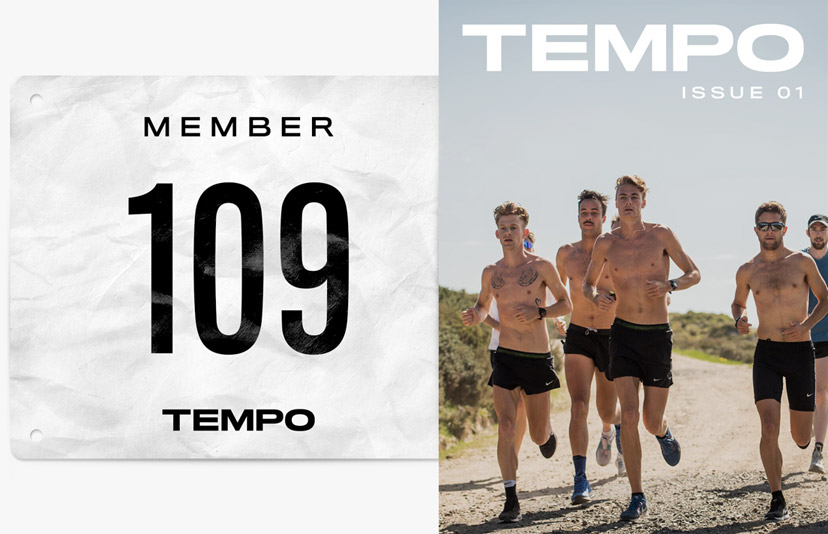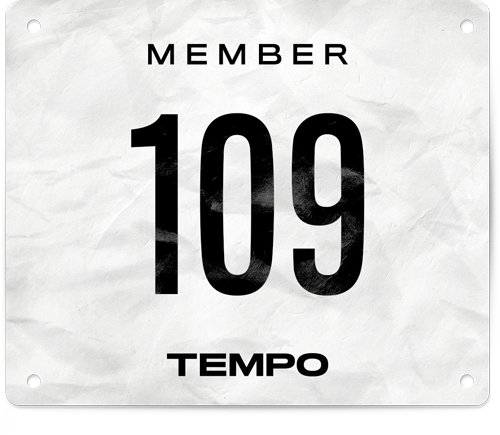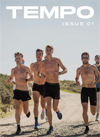Culture
Running, Recovery and Redefining Resilience at the Sydney Marathon
Momo Burn on Rewriting Her Relationship With Running
Editor’s note: As runners, many of us experience the challenge of managing injuries. Morenna “Momo” Burn knows what it’s like to face these setbacks over and over again. So she has looked for other fulfilling ways, beside running, to be an active part of her community. Recognising her contributions, the Sydney Marathon has made her a 2025 community ambassador.
“In a culture that often glorifies pushing through pain, Momo's journey is a powerful reminder that true strength lies in slowing down, tuning in, and choosing rest and recovery over regret,” fellow community ambassador Tara Meakins writes.
*This is the fourth feature in Tempo Journal’s five-part look at some of the dozen community ambassadors who are the beating heart of Sydney 2025. Read the first, second and third articles in the series. *
For a growing number of marathon runners, the hardest part of training isn’t the long runs or the early alarms. It’s not the blisters or aching muscles. It’s not the hours spent treading the footpath or sacrificing your Sundays. It’s being told to stop doing the very thing you love.
Few know that feeling more than Morenna “Momo” Burn. As a community ambassador for the TCS Sydney Marathon, and a triathlete and trail runner, the 43-year-old’s running journey has been defined not just by finish lines but by the blows she’s faced along the way.
From a devastating back injury to postpartum recovery, a stress fracture and a fractured ankle, Momo has experienced the physical and emotional toll of being forced to pause – and the strength it takes to rebuild when everything falls apart. What followed was a confronting yet powerful lesson in listening to her body, honouring rest, and redefining what progress looks like – not only in kilometres logged, but in resilience gained.
“I regained my ability to walk and then, so excited to be able to move again, I wanted to move faster, which led to learning to run.”
Momo Burn
“Each setback affected me mentally in the beginning, as the injuries were sudden and I was extremely disappointed to miss out on races I’d trained for and was looking forward to,” Momo says. “It was said to me, ‘There are always other races,’ and ‘There’s always next year,’ but at the time this didn’t do anything to help. These feelings of incredible disappointment are normal – it’s how you deal with them that is important, and I found new ways to be involved and fill my cup.”
With her infectious energy, Momo has become a beacon of positivity and persistence in the running world as a familiar face at finish lines and voice of encouragement at run clubs. But behind the medals, PBs and finish line photos is a far deeper story that began with pain.
“In 2008 I suffered my first serious injury,” she explains. “After years of wear and tear from snowboarding and the manual labour and heavy lifting of working in hospitality and a nursing home, plus having no core strength, I herniated every disc in my lower back.”
Unable to move or walk without excruciating pain, Momo lived through an agonising two-year recovery, but she emerged with a determination to rebuild. “I regained my ability to walk and then, so excited to be able to move again, I wanted to move faster, which led to learning to run,” she says. “In the beginning I was incredibly slow, slower than a shuffle, but I loved the freedom I felt from moving, being outdoors and challenging my body. Then I never looked back.” As Momo “shuffled” more, she naturally reached longer distances and found herself entering running events that once seemed impossible to complete. First a 10K, then Sydney’s City2Surf, then a half marathon. “Then I needed something more than just running, so I tried obstacle-course races and suddenly I was also training for my first triathlon,” she reflects. “Within a year, I did my first Half Ironman, the 70.3 – then I was hooked on triathlons and doing races around Australia and the world. I loved the variety of training, the outdoors and the variable challenges of every race. But most of all, I loved the challenge and proving to myself I could do all the things that I was told would be impossible for me!”
“It was said to me, ‘There are always other races,’ and ‘There’s always next year,’ but at the time this didn’t do anything to help.”
Momo Burn
Then 2022 brought Momo’s next big hurdle with the birth of her first child. “The return to running postpartum was like starting from scratch again, and it was a long, slow and physically and mentally challenging process,” she shares. “Before getting pregnant, I was at the top of my game, the fittest I’d been in my life, and then all of a sudden I was dealing with a body I didn’t recognise and wasn’t able to do all the things I was doing pre-pregnancy. I was two sizes bigger, heavier and slower. It was hard to deal with, and I put too much pressure on myself at the time.”
Once again, Momo worked to slowly build up her fitness. “I did my first parkrun non-stop, then my first race, which was a 10K, and then a half marathon,” she says. “The following year the Sydney Marathon was in the candidacy period for becoming a World Marathon Major and the reduced-price entries were enticing enough for me to enter.”
Suddenly Momo was training for her first marathon. “In 2023, I did the Gold Coast Marathon (in 4:48 hours) as a practice run for the main event, then the Sydney Marathon on an unbelievably hot day (in 4:44 hours), followed by a sub-four hour marathon at the Gold Coast the following year,” she describes. “I was getting fitter, faster and stronger, and having a blast being involved in so many running communities and doing so many events. I had no issues injury wise, so I kept doing everything.”
In just 12 months, Momo completed six marathons, two 50K trail ultras and a range of other half marathons and smaller distance races. “I felt on top of my game again,” she reflects, “doing races and getting faster and more PBs at each race.”
It all unraveled in August 2024 when Momo sustained a femoral neck stress fracture. “There was no warning, just the sudden onset of pain, which I dismissed as a pulled muscle from racing a PB,” she says. “One week later, it was a full-blown stress fracture.”
The news hit Momo hard. “I was absolutely devastated and the diagnosis was a very painful pill to swallow as I had to come to terms with the fact that I would not be doing several races that I was so looking forward to, including the main event: the Sydney Marathon. I was at the top of my game and fell to rock bottom.”
The injury left the mother of one out of the game for eight months, but with rest and recovery she rose from the ashes to compete in three running events. Then she rolled her ankle so severely during a trail run that she completely ruptured a ligament in her ankle and sustained a small fracture, benching her for seven weeks.
“That was so hard to deal with mentally as I had just had so much time off and I was so excited to be injury free for 2025,” she opens up. “I felt so stupid for heading out to do a race on terrain that I hadn’t trained for and that by doing so I subsequently ruled myself out for further events this year.”
“I had to come to terms with the fact that I would not be doing several races that I was so looking forward to, including the main event: the Sydney Marathon.”
Momo Burn after suffering another injury in August 2024
While Momo has spent nearly a decade dealing with setbacks, she’s “most definitely” noticed a spike in running injuries with the run club boom. “Prior to Covid and prior to the rise of run clubs, the occurrence of injuries seemed less common, and it was like a very rare, unfortunate, major event for someone to be injured,” she explains. “Within my running communities, it was very few and far between to hear of someone who was out with an injury.
“Now with the increase in running clubs and the popularity of running, with so many running events and running brand activations, people are running more frequently and possibly not following a structured training program or are beginners who are not educated properly and are therefore doing more too soon and without building properly.”
Before she suffered a stress fracture last year, Momo already knew several runners who had bone stress injuries. “As soon as I was diagnosed, so many people reached out to me with the same injury,” she says. “It was so much more common than I could have imagined.”
Living through injuries and being forced to step back, quite literally, from races, Momo has learnt a lot along the way and has since completely reshaped her approach to training.
“I never understood how important correcting fuelling, rest and recovery were,” she admits. “I would just keep doing all the events and train all the time because I thought I could, not truly understanding that I needed recovery to build bone density and strength so that I could in turn be better and stronger for longer.”
Now she is determined not to overdo it or do too much too soon. “It is absolutely important to build up and increase your load slowly to avoid injury,” Momo says. “Rapid increases in training intensity or volume, or insufficient rest between training sessions, can overwhelm the bone’s ability to adapt and lead to stress fractures.”
“These feelings of incredible disappointment are normal – it’s how you deal with them that is important, and I found new ways to be involved and fill my cup.”
Momo Burn
Then there’s what we eat. “As your training increases, so do your body’s requirements, so proper nutrition, caloric intake and getting enough protein are essential to sustain training sufficiently to avoid injury,” Momo explains. “Pregnancy and breastfeeding can also create a negative calcium balance, meaning the body is losing more calcium than it’s taking in, potentially impacting bone density.”
She also points to strength training as vital for runners in helping to reduce the risk of injury, whilst also contributing towards better running performances, as well as finding the right support. “It’s important to enlist a coach who understands my needs as a female athlete, who can support me – and reign me in – and who can structure a training program to suit me and help me build properly for the events I want to do,” she explains.
Her final lesson is simple. Fresh off the back of an ankle injury that happened while she was out for a trail run, Momo has this to say: “Concentrate, concentrate, concentrate on the ground and the terrain. Distractions can lead to tripping on a rock and injuring yourself.”
While the physical toll of her injuries is undeniable, it was the mental and social challenges that hit Momo just as hard.
“I initially struggled with being out of the community that I thrive in so much and not doing the activity that I love,” she explains. “At times, I was out of the game for so long that I felt socially isolated and didn’t have the network of my running community that I did before. I realised though that time moved much slower for me at home than it did for those out running. It felt like I was gone for ages, yet it was only a few events that I missed, and I could always pick up where I left off when I recovered.”
While Momo was affected emotionally in the early stages of her injuries, she learnt to respect the recovery period and soon found other ways to be involved in the running community which kept her positive. “Missing out on weekly run clubs and the social aspect was hard but I found new ways to be involved, such as meeting everyone for the post-run coffee, cheering them on at races or volunteering at events. I surprised myself that I actually had the most cup-fulfilling experiences and time passed much quicker than sitting at home feeling sorry for myself.”
Showing up for others also opened Momo up to opportunities she never dreamed of. “Like interviewing runners at the finish line of the Sydney Marathon last year and being picked as a community ambassador for 2025,” she says.
“I can wholeheartedly say now, being on the other side of two back-to-back injuries, that there really is next year and there really are more races.”
Momo Burn
In a culture that often glorifies pushing through pain, Momo's journey is a powerful reminder that true strength lies in slowing down, tuning in, and choosing rest and recovery over regret. While navigating injuries have tested her limits, time and time again, they’ve also expanded her perspective on wellbeing, flexibility and the importance of showing up for yourself, even when you can’t show up at the start line.
“The goal posts may shift, but remain positive – it will help in your recovery – adjust your expectations, celebrate the small wins and you will be pleasantly surprised with the experiences, outcomes and opportunities that come your way,” she insists. “The feeling of returning to running each time and achieving new goals, at whatever end of the spectrum, is so rewarding, and being surrounded by the positivity and support of the running community is simply the best feeling.
“I can wholeheartedly say now, being on the other side of two back-to-back injuries, that there really is next year and there really are more races.”


